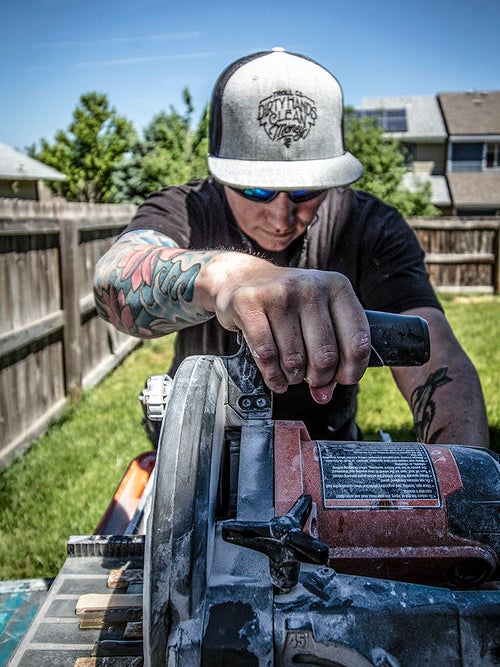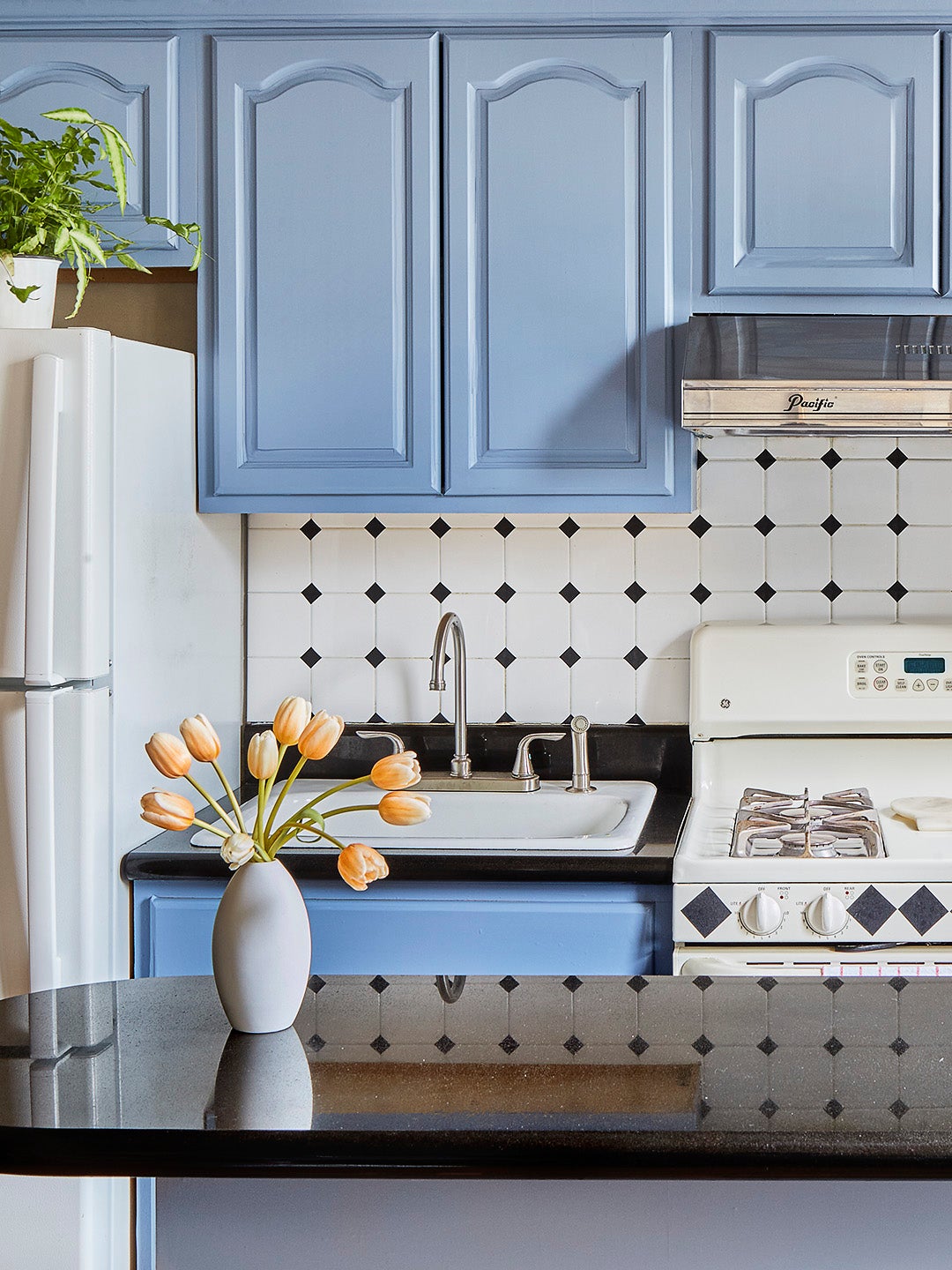We Asked Women in the Contracting World for the DIY You Should Be Trying
When a storm brought days of subfreezing temperatures to Texas back in February 2021, Gabriella Ansley had an unsettling realization. “I was like, gosh, I don’t even know how to turn off the water in our house,” she recalls. Having just welcomed her first child, Ansley knew that between herself and her husband, she’d be the one at home who’d have to talk to the plumber about the burst pipes and discuss rates with the person hauling away the fallen tree limbs in the yard. “I wanted to speak to someone I could really relate to, and I felt like that would be easier with a woman,” says Ansley. So she called up her old college friend and former colleague Lacey Soslow in Philadelphia, who had been remodeling homes for years, and asked how she could find female contractors to do the work. It wasn’t as simple as a quick Google search, she learned.
“Once we started digging in, we realized there are all these vibrant communities, from a tile group in northern Pennsylvania to an electric group in British Columbia, but everything was so decentralized,” says Soslow. “We felt like, wow, it would be really cool if we could bring all of these people together.” That’s when the idea for Matriarchy Build hit them: The newly launched platform is designed to not only amplify female and LGBTQ+ presence in the trades but empower homeowners to take on their own projects.

The website features a curated directory of pros, ranging from general contractors to carpenters to handywomen, who are available for one-on-one consultations and any necessary follow-up sessions (many meetings may just be guidance driven; others might lead to tackling a larger project together). So far, Ansley and Soslow have seen both single women and couples booking sessions, many of them interested in learning more about what they should expect before they hire an architect or builder. And shockingly, “we’ve also gotten a lot of requests for help with IKEA hacks,” shares Soslow. For the DIYers out there, they also put together a whole informative page where you can learn things like the difference between a drill and an impact driver or the ins and outs of siding.
Ahead, we asked five of Matriarchy Build’s vetted professionals about the types of tasks you should definitely be trying, what to keep in your toolbox, and more.
Monica Miraglilo, General Contractor

Yes, you can totally tile a backsplash on your own. As long as you have a plan and are organized, you can do it!
The tool any newbie DIYer should have: A tape measure (and keep it with you at all times!). It will ensure you are accurate in ordering products and making the proper cuts.
My favorite renovation (so far): I recently completed a project where [the clients] empowered me to be creative with no limitations. It allowed me to push myself outside of my comfort zone by taking on the role of general contractor, designer, and decorator.
The trick to staying on budget: Do your homework and build conservative estimates by adding 10 percent, that way you are prepared and ahead of the game, avoiding surprises down the road.
Anika Gandhi, Carpenter-DIYer

My advice for anyone looking to get into the biz: Pick a simple project with basic tools and get your hands dirty. It will give you the satisfaction and the confidence boost of a finished project. Plus you can slowly work up to trying more complicated ones.
Yes, you can totally paint walls and cabinets, install baseboards, and even accent walls using trim on your own.
The tool any newbie DIYer should have: I highly recommend a miter saw (a circular saw or jigsaw will work, as well). Getting accurate cuts takes the frustration out of any project that involves wood boards.
My favorite renovation (so far): Definitely my kitchen. It went from a small, boring, brown room to the space of my dreams!
The trick to staying on budget: Talk with others with experience. It might give you ideas for tackling the project in ways you may not have thought about. You might also find out about products that you didn’t know existed.
Gabriela Narvaez, General Contractor

My advice for anyone looking to get into the biz: Start with renovating around your own house. You’ll earn a Ph.D. in home improvement with everything you learn from those mistakes. The trick is to keep going even when you mess up.
Yes, you can totally change out a bathroom vanity on your own. If you’re going to replace a vanity with the same size vanity, the only thing you need to think about is unhooking the existing plumbing and hooking the new plumbing back up. The same goes with replacing a toilet!
The tool any newbie DIYer should have: A laser measure (it turns a long task into a five-minute one). Not to mention you’ll avoid many painful finger cuts from metal measuring tapes retracting without warning.
The trick to staying on budget: Don’t be quick to try to replace everything. Change paint, mirrors, and lighting first before going into the more complicated renovations like tile, plumbing fixtures, or moving walls.
Chris Ford, Tile Setter

My advice for anyone looking to get into the biz: Find your niche. Some people love to do big commercial jobs. Others, like myself, prefer to work directly for homeowners and like difficult, creative, and artistic jobs.
The tool any newbie DIYer should have: A tile saw (or wet saw) and a good diamond blade. That may sound expensive and daunting, but you can get a reasonable tabletop tile saw from a big-box store for around $100.
My favorite renovation (so far): I am wrapping up what is quite honestly my favorite project of my career. It is a full bathroom tile remodel. We demoed the shower and floor, and used an old-school method called “floating,” where you use concrete to build the shower walls, floor, and curb. Then we installed mint julep–colored mosaic tiles on the walls and 4-by-4 tiles on the curb and pan.
The trick to staying on budget: See what your contractor’s online presence is. Do they have reviews? Is there a license for their trade, and if so, do they have one? Do they carry insurance and workers compensation if they have employees? Hire the most qualified person for the job, not the cheapest. The lowest bidder can end up costing you thousands more if the job has to be redone.
Ally Heisler, Electrician

Yes, you can totally change a light fixture on your own. The impact it can have on a room is very exciting as long as you learn to do it safely.
The tool any newbie DIYer should have: A volt tick or voltage tester. It helps you know if the power is on or off.
My favorite renovation (so far): I’ve been helping on a renovation project for a place of worship, and it has been very fulfilling.
The trick to staying on budget: Look for recycled light fixtures at secondhand shops or online marketplaces. Also pay attention to the kind of bulbs you’re installing. LED bulbs will pay off in energy savings in the long run.
The post We Asked Women in the Contracting World for the DIY You Should Be Trying appeared first on domino.

